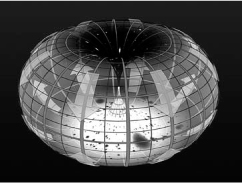Modern MythsModern Attempts to Explain Existence |
What is an example of a modern creation myth? |
Many scholars and theologians have reminded us that, with the exception of religious fundamentalists, as the human race has evolved, so has its understanding of creation. If once we believed that Mother Earth was fertilized by Father Sun, or that a god created the world by thought or word, we have now been led by our clearer understanding of the nature of the universe to new creation stories which for our modern minds are as true as the Mother Earth or ex nihilo myths were for earlier generations. They are “true” to us because they are based in science, the thinking process to which the modern world ascribes. We “believe in” science as ancient peoples believed in other systems of thought.
So, for example, we explain creation by way of scientific hypotheses based on technologically based astral observation and experiments with particles. The current generally accepted theory of creation is the “Big Bang” theory, which depicts a universe that came into being out of the void in a matter of minutes as the result of one great explosion. According to the theory, our solar system developed from that explosion and the universe has been expanding ever since. When we add Charles Darwin’s theory of evolution to the Big Bang theory, we have the story of a creation which is very much a continuing process.
In a book titled The Universe Is a Green Dragon: A Cosmic Creation Story, physicist Brian Swimme, echoing the thoughts of a “new age” philosopher/theologian, Thomas Berry, places the scientific theories in a more traditional mythic context that refers us back to the old cosmic egg creation and dragon myths. The universe, is “alive,” he says, and has been since the “cosmic egg of the primeval fireball,” which, like a dragon, poured forth creative fire.

This illustration by Bryan Brandenburg depicts the Big Bagel Theory posited by physicist Howard Bloom about the dynamics of the origin of the universe.
